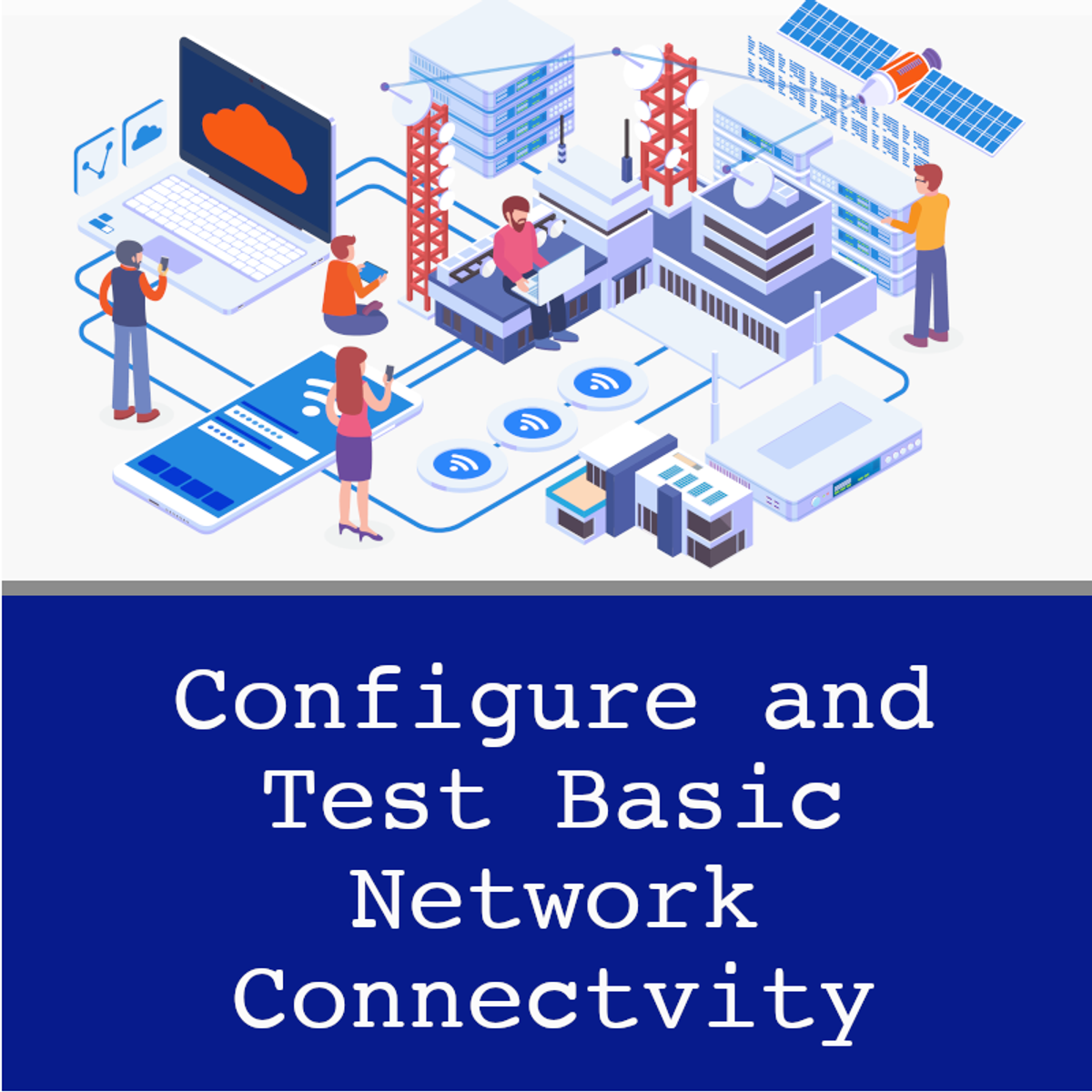
Welcome to this guided project about Configuring and Testing Basic Network Connectivity
This project is designed for IT security professionals and aspiring network engineers.
Read more
Welcome to this guided project about Configuring and Testing Basic Network Connectivity
This project is designed for IT security professionals and aspiring network engineers.
Welcome to this guided project about Configuring and Testing Basic Network Connectivity
This project is designed for IT security professionals and aspiring network engineers.
To succeed in this project, it’s recommended to have a good background in computer networks.
A Cisco networking academy ID is also required to use the Packet Tracer in this project.
In this project, you will configure and test basic network connectivity by managing configuration on Cisco devices such as IP addresses, virtual interfaces, and DHCP servers and verifying end-to-end network connectivity.
By the end of this project, you will be able to configure small-size computer networks and test their end-to-end connectivity.
This project is one of a kind because it teaches foundational computer network skills to beginners and professionals alike. Moreover, it is based on an entirely simulated environment where learners can practice as if they have access to real devices.
Three deals to help you save


What's inside
Syllabus
Good to know
Save this course
Reviews summary
Networking connectivity basics fundamentals
Activities
Configure IP Addresses
Show steps
Configure IP addresses on different network devices to practice the skills learned in the course.
Browse courses on
IP Address Configuration
Show steps
-
Review the concept of IP addresses
-
Practice configuring IP addresses on a single device
-
Practice configuring IP addresses on multiple devices
Configure Virtual Interfaces
Show steps
Follow guided tutorials to configure virtual interfaces and practice the skills learned in the course.
Browse courses on
Cisco Switching
Show steps
-
Review the concept of virtual interfaces
-
Practice configuring virtual interfaces on a single device
-
Practice configuring virtual interfaces on multiple devices
Configure DHCP Servers
Show steps
Configure DHCP servers to practice the skills learned in the course.
Show steps
-
Review the concept of DHCP servers
-
Practice configuring DHCP servers on a single device
-
Practice configuring DHCP servers on multiple devices
Three other activities
Expand to see all activities and additional details
Show all six activities
Test Network Connectivity
Show steps
Follow guided tutorials to test network connectivity and practice the skills learned in the course.
Browse courses on
Network Testing
Show steps
-
Review the methods for testing network connectivity
-
Practice testing network connectivity between two devices
-
Practice testing network connectivity between multiple devices
Troubleshoot Network Connectivity
Show steps
Practice troubleshooting network connectivity issues to reinforce the skills learned in the course.
Browse courses on
Network Troubleshooting
Show steps
-
Review the common causes of network connectivity issues
-
Practice troubleshooting network connectivity issues on a single device
-
Practice troubleshooting network connectivity issues on multiple devices
Attend a Network Configuration Workshop
Show steps
Attend a network configuration workshop to supplement the skills learned in the course.
Browse courses on
Network Design
Show steps
-
Find a network configuration workshop
-
Register for the workshop
-
Attend the workshop
Configure IP Addresses
Show steps
Configure IP addresses on different network devices to practice the skills learned in the course.
Browse courses on
IP Address Configuration
Show steps
- Review the concept of IP addresses
- Practice configuring IP addresses on a single device
- Practice configuring IP addresses on multiple devices
Configure Virtual Interfaces
Show steps
Follow guided tutorials to configure virtual interfaces and practice the skills learned in the course.
Browse courses on
Cisco Switching
Show steps
- Review the concept of virtual interfaces
- Practice configuring virtual interfaces on a single device
- Practice configuring virtual interfaces on multiple devices
Configure DHCP Servers
Show steps
Configure DHCP servers to practice the skills learned in the course.
Show steps
- Review the concept of DHCP servers
- Practice configuring DHCP servers on a single device
- Practice configuring DHCP servers on multiple devices
Test Network Connectivity
Show steps
Follow guided tutorials to test network connectivity and practice the skills learned in the course.
Browse courses on
Network Testing
Show steps
- Review the methods for testing network connectivity
- Practice testing network connectivity between two devices
- Practice testing network connectivity between multiple devices
Troubleshoot Network Connectivity
Show steps
Practice troubleshooting network connectivity issues to reinforce the skills learned in the course.
Browse courses on
Network Troubleshooting
Show steps
- Review the common causes of network connectivity issues
- Practice troubleshooting network connectivity issues on a single device
- Practice troubleshooting network connectivity issues on multiple devices
Attend a Network Configuration Workshop
Show steps
Attend a network configuration workshop to supplement the skills learned in the course.
Browse courses on
Network Design
Show steps
- Find a network configuration workshop
- Register for the workshop
- Attend the workshop
Career center
Network Engineer
Network Administrator
Systems Administrator
IT Security Analyst
Network Technician
Data Analyst
Hardware Engineer
Information Security Manager
Cloud Engineer
Database Administrator
IT Project Manager
IT Consultant
Web Developer
Software Engineer
Technical Writer
Reading list
Share
Similar courses
OpenCourser helps millions of learners each year. People visit us to learn workspace skills, ace their exams, and nurture their curiosity.
Our extensive catalog contains over 50,000 courses and twice as many books. Browse by search, by topic, or even by career interests. We'll match you to the right resources quickly.
Find this site helpful? Tell a friend about us.
We're supported by our community of learners. When you purchase or subscribe to courses and programs or purchase books, we may earn a commission from our partners.
Your purchases help us maintain our catalog and keep our servers humming without ads.
Thank you for supporting OpenCourser.


